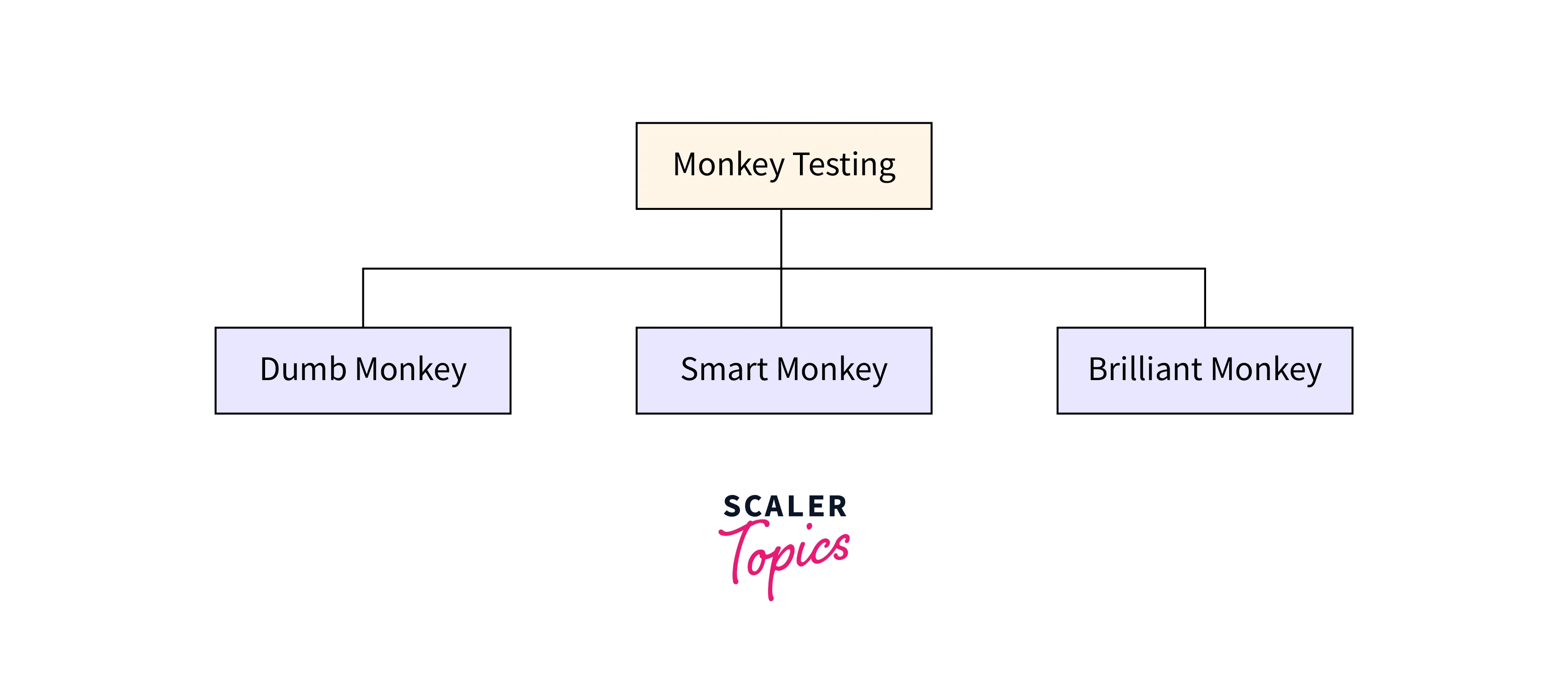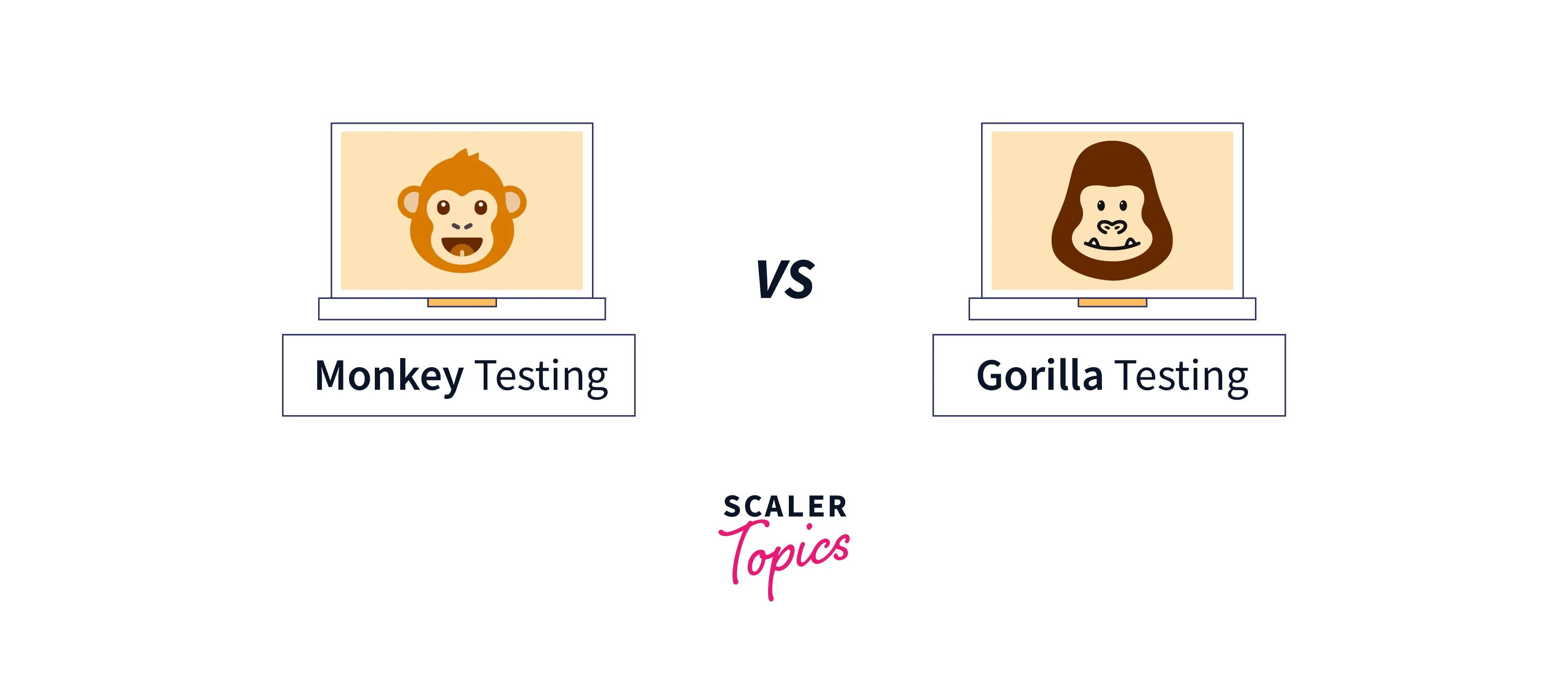Difference Between Monkey & Gorilla Testing
Overview
In the world of software testing, there's a lot of talk about the difference between Monkey Testing and Gorilla Testing. While both are crucial for ensuring the quality and reliability of software, they differ significantly in their approach and objectives. In this article, we'll take a closer look at the difference between these two testing approaches and why they matter in the software testing process. So, let's get started!
What is Monkey Testing?
Monkey testing is a type of software testing that involves randomly simulating user actions on a software application without following a specific test plan. This type of testing is used to check software's behavior and errors when a user unexpectedly uses the software. In monkey testing, testers use automated tools or manually simulate user actions, such as clicking buttons, typing random characters, or navigating through different screens. The purpose of this testing is to find hidden bugs that may have been missed in other types of testing such as functional or integration testing.
It can also help testers identify critical areas of the software that require more attention and testing. However, because monkey testing is random, it may not provide comprehensive test coverage, and it can be time-consuming to analyze the results. Therefore, monkey testing is often used along with other types of testing to ensure the software's overall quality and reliability.
Features of Monkey Testing
Some of the features of monkey testing are listed as follows:
- Error Detection : Monkey testing is an effective method to detect bugs and errors in software apps that may have gone unnoticed during other forms of testing. The aim of this testing approach is to uncover any issues or defects in the software, such as crashes, freezes, or unexpected behavior, that might cause inconvenience to users.
- Automation : While monkey testing can be performed manually, it can be automated using some automation tools that can generate a large number of random inputs and test cases. Automated monkey testing enables the testing team to run the same tests repeatedly, saving time and increasing efficiency.
- Unpredictability : The primary purpose of monkey testing is to test the software's behavior and errors when a user uses the software in an unexpected way. It helps to test the software's ability to handle unpredictable user behavior, such as clicking on random buttons, entering unexpected values in fields, or performing actions in a random sequence.
- Coverage : Monkey testing may not provide comprehensive test coverage, but it can help identify critical areas of the software that require more attention and testing. This testing approach can help prioritize testing efforts by identifying the areas of the software that are most prone to errors or crashes.
- Time-consuming : Analyzing the results of monkey testing can be time-consuming, especially when a large number of random inputs are used. Therefore, the testing team should use automation tools that can help them save time and effort by analyzing the test results more efficiently.
- Randomness : Monkey testing involves simulating user actions randomly without following any specific test plan. This randomness can help uncover bugs and errors that would not be detected during scripted testing.
Types of Monkey Testing
Monkey testing can be broadly categorized into three types based on the level of intelligence and randomness involved.

- Dumb monkey testing This involves completely random and unpredictable user actions on the software without following any specific planning. This type of testing finds unexpected errors that may occur when the software is used in an unpredictable manner.
- Smart monkey testing This involves simulating user actions that are likely to occur in real-world scenarios. The tester focuses on specific areas of the software and simulates user actions that are likely to cause unexpected behaviors.
- Brilliant monkey testing This involves a combination of dumb and smart monkey testing approaches. In this type of testing, the tester uses a combination of random and intelligent actions to thoroughly test the software. The goal is to identify not only unexpected errors but also to comprehensively test the software to ensure its quality and reliability.
What is Gorilla Testing?
Gorilla testing is a type of software testing that focuses on testing specific modules or functionalities of a software application. Unlike monkey testing, which is random and haphazard, Gorilla testing is more structured and planned. In this approach, testers design and execute tests that focus on specific areas of the software, such as critical features and functionalities. The goal is to make sure that such areas are properly tested and validated to meet the required quality and reliability.
Gorilla testing can be performed manually or through automation, depending on the scope and complexity of the software application. Manual gorilla testing involves designing test cases and executing them manually, whereas automated gorilla testing involves developing test scripts and using automation tools to execute them.
Features of Gorilla Testing
Some of the features of Gorilla testing are listed as follows:
- Focused Testing : Gorilla testing is designed to be a focused approach for testing specific modules or functionalities of a software app. This means that testing efforts are directed toward the critical areas of the software that are most important for the application's functionality, performance, and reliability.
- Structured Approach: Gorilla testing is a more structured and planned approach to testing. Testers design and execute tests that focus on specific areas of the software, such as critical features or functionalities, to ensure that they meet the required quality and reliability standards.
- Validation: The primary goal of Gorilla testing is to validate critical areas of the software to ensure that they meet the required quality and reliability standards. Gorilla testing focuses on testing specific modules and functionalities of the software, which are critical for the application's functionality and performance.
- Automation: Gorilla testing can be performed manually or through automation, depending on the scope and complexity of the software application. Automation tools can help to increase the efficiency and effectiveness of Gorilla testing by automating repetitive tasks, reducing testing time, and providing more accurate results.
- Efficiency : Gorilla testing is an efficient approach to software testing because it focuses on specific areas of the software that are critical for its functionality and performance. It is a targeted approach, which reduces the overall testing time and effort, making it an efficient and effective approach to software testing.
- Cost-Effective : Gorilla testing is a cost-effective approach to software testing because it focuses on critical areas of the software, reducing the overall testing time and cost as testing the entire application can be time-consuming and expensive.
Monkey Testing vs Gorilla Testing: Usage
Monkey testing is often used to perform random and unpredictable actions on the software to identify unexpected behaviors and errors that may occur when the software is used in an unpredictable manner. It is mainly used in the starting stages of testing, where the purpose is to identify as many potential issues as one can! Monkey testing can also be used to along with other forms of testing such as unit testing, integration testing, functional testing, and user acceptance testing (UAT).

On the other hand, Gorilla testing is a more structured and targeted approach to software testing. It focuses on specific modules or functionalities of a software application, such as critical features or functionalities, to ensure they meet the required quality and reliability. It is an effective way to validate critical areas of the software and identify potential issues or defects that may impact its functionality and performance.
Monkey Testing vs Gorilla Testing: A Comparison
A complete comparison table can be found below highlighting the major differences between the 2 approaches.
| Characteristic | Monkey Testing | Gorilla Testing |
|---|---|---|
| Testing Approach | Monkey testing is a random and haphazard approach to software testing, where testers randomly test the application without any predefined structure or plan. | Gorilla testing is a targeted and structured approach that focuses on specific modules or functionalities of the software application. |
| Area of Focus | Monkey testing focuses on testing the entire software, as it is meant to detect bugs and errors that may have been missed in other forms of testing. | Gorilla testing focuses on specific modules or functionalities of the software that are critical for its functionality and performance. It is primarily used for validating these critical areas of the software. |
| Stage of Testing | Monkey testing is mainly used in the early stages of testing for functional testing. | Gorilla testing is used in the later stages of testing for integration and system testing. |
| Complements Other Testing Methods | Monkey testing often complements other forms of testing, such as unit testing, integration testing, and user acceptance testing. | Gorilla testing is a standalone approach that is used to validate critical areas of the software. It does not complement other forms of testing and is often used as a final testing stage. |
| Automation | Monkey testing is primarily automated, using tools to generate a large number of random inputs and test cases. | Gorilla testing can be performed manually or through automation, depending on the scope and complexity of the software application. |
| Testing Scope | Monkey testing may not provide comprehensive test coverage, but it can help identify critical areas of the software that require more attention and testing. | Gorilla testing provides thorough coverage of critical areas of the software and helps ensure that they meet required quality and reliability. |
| Cost | Monkey testing can be expensive due to the extensive use of automation | Gorilla testing is a cost-effective approach to software testing because it only focuses on critical areas of the software. |
| Testing Depth | It is Surface-level testing that focuses on identifying unexpected behaviors and errors. | It is a kind of Deep-level testing that targets critical areas of the software to ensure quality and reliability. |
| Testing Environment | It can be performed in development, test, and production environments. | It is usually performed in test or staging environments. |
| Skill Level | It can be performed by testers with a wide range of skill levels, including entry-level testers. | It requires experienced and skilled testers. |
| Testing Frequency | This testing is performed throughout the software development lifecycle to identify potential issues and unexpected behaviors. | This is usually performed once the software has been thoroughly tested using other forms of testing. |
Conclusion
In this article, we learned about:
- Monkey Testing is a type of software testing that involves randomly simulating user actions on a software application without following a specific test plan and is used to find hidden bugs and identify critical areas of the software that require more attention and testing.
- Monkey testing can be categorized into three types based on the level of intelligence and randomness involved: dumb, smart, and brilliant monkey testing.
- Gorilla Testing is a type of software testing that focuses on testing specific modules or functionalities of a software application, making it a targeted and efficient approach to software testing.
- The major difference between Monkey Testing and Gorilla Testing is that Gorilla testing is more structured and planned than monkey testing, and can be performed manually or through automation.
- The goal of Gorilla testing is to validate critical areas of the software to ensure that they meet quality and reliability requirements.
- Combining monkey and gorilla testing can result in more comprehensive software testing as Monkey testing can help identify hidden bugs and critical areas that require more attention, while Gorilla testing can provide focused and targeted testing on specific modules or functionalities.
- The tester should consider various factors and maintain a balance between monkey and gorilla testing depending on the specific requirements and objectives of the software testing process as both approaches have their advantages and disadvantages.
